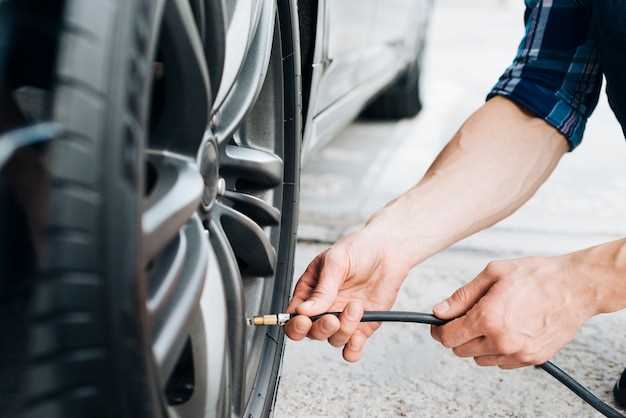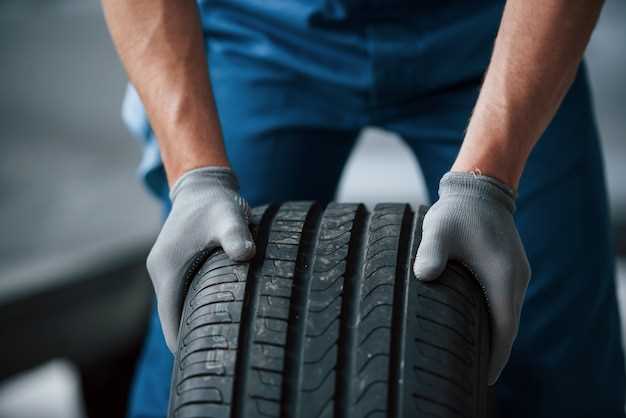
Owning a classic car is a cherished experience that comes with the responsibility of proper care. One of the most critical components of maintaining your classic vehicle is ensuring that its tires are in optimal condition. Tires are the only contact your car has with the road, making their maintenance essential for both safety and performance.
Regular inspection and timely replacement of tires can significantly impact the driving experience of classic cars. Over time, tires can degrade due to factors such as age, weather conditions, and driving habits. Understanding when to replace tires and how to care for them is vital for preserving the integrity and performance of your classic car.
This guide will provide essential tips on tire maintenance, including checking tread depth, monitoring air pressure, and identifying signs of wear. Additionally, we will discuss the importance of selecting the right tires tailored for classic cars, ensuring both aesthetics and functionality align with your vintage vehicle’s needs.
Understanding Tire Aging and Its Impact on Classic Cars
Tire aging is a critical aspect of tire maintenance that cannot be overlooked, especially for classic cars. Over time, rubber compounds in tires begin to deteriorate due to factors such as exposure to sunlight, heat, and oxygen. This aging process can significantly affect performance and safety.
The primary indicator of tire aging is the tread wear, but even tires that appear to have ample tread can be compromised internally. Classic car enthusiasts should regularly inspect their tires for signs of cracking, splitting, or bulging, which may signal that the tire has reached the end of its useful life.
A general rule of thumb is that tires should be replaced every six to ten years, regardless of tread wear. Classic car tires might not be used as frequently, which can lead to age-related deterioration rather than wear-related issues. Therefore, maintaining a close watch on the production date, which can be found on the tire’s sidewall, is essential for proper care.
Furthermore, improper storage can exacerbate tire aging. Classic cars should be stored in a cool, dark, and dry environment to minimize exposure to harmful UV rays and temperature fluctuations. Using tire covers can also protect them from sunlight and debris while not in use.
In summary, understanding tire aging is crucial for maintaining the safety and performance of classic cars. Regular inspections and timely replacements are essential elements of tire care that ensure the reliability of these cherished vehicles.
Steps for Inspecting Classic Car Tires for Safety

Regular care of your classic car tires is essential to ensure safety and performance. Following these steps can help identify potential issues before they become serious problems.
1. Visual Inspection: Start by examining each tire for any signs of damage such as cracks, bulges, or punctures. Look for uneven wear patterns that may indicate alignment or suspension issues. Pay attention to the sidewalls as well as the tread.
2. Tread Depth Check: Use a tread depth gauge or the penny test to measure the tread depth. Ideally, classic car tires should have at least 4/32 of an inch of tread. Tires with insufficient tread can compromise traction and increase the risk of hydroplaning.
3. Inflation Pressure Measurement: Check the tire pressure using a reliable gauge. Classic car tires should be inflated to the manufacturer’s recommended pressure, which can often be found in the owner’s manual or on a sticker inside the driver’s side door. Under-inflated tires can lead to overheating and blowouts, while over-inflated tires can decrease traction.
4. Age Assessment: Consider the age of your tires, as rubber can degrade over time regardless of tread wear. Most manufacturers recommend replacing tires that are over six to ten years old, even if they appear to be in good condition.
5. Wheel Alignment and Balance: Inspect for signs of poor alignment, which may include uneven tire wear or the car pulling to one side. Proper alignment and balancing are crucial for even tire wear and safety while driving your classic car.
6. Seek Professional Help: If you notice any significant issues during your inspection, consult a professional for a thorough evaluation. Tire maintenance is critical, and experts can provide insights into necessary repairs or replacements.
Maintaining your classic car’s tires with regular inspections not only enhances safety but also extends the life of your vehicle. Remember, taking proactive steps in tire care can prevent costly accidents and ensure a smoother ride.
Choosing the Right Tires for Your Classic Vehicle

Selecting the appropriate tires for your classic car is crucial for ensuring optimal performance, safety, and aesthetics. Classic vehicles often require specific tire types that not only match their design but also meet the driving conditions and handling characteristics expected from vintage automobiles.
First, assess the type of driving you’ll be doing. If you plan to participate in classic car shows or events, prioritizing originality is essential. Look for tires that match the original specifications, including size, tread pattern, and profile. This not only preserves the vehicle’s authenticity but also enhances its overall appearance.
For those who use their classic cars for regular driving, consider performance characteristics in addition to vintage style. Modern reproduction tires can offer improved grip, handling, and durability without compromising the classic look. Brands often produce tires specifically designed for classic vehicles, ensuring a balance between aesthetics and functionality.
It’s also important to consider the climate and road conditions you will encounter. If your classic vehicle will face wet or slippery conditions, opt for tires with better water displacement capabilities. Conversely, dry climates may afford you more options in terms of tread design.
Don’t forget to check the tire’s load rating and speed index. Classic cars often have specific requirements due to their weight and design. Selecting the right tire ensures that your vehicle can safely handle the pressures of everyday use or spirited drives.
Finally, always consult with professional tire specialists who understand classic vehicles. Their expertise can guide you through tire selection, balancing, and installation, ensuring that you achieve the best care for your classic car’s tires. Proper tire maintenance and periodic inspections are equally vital for extending their life and maintaining performance.



